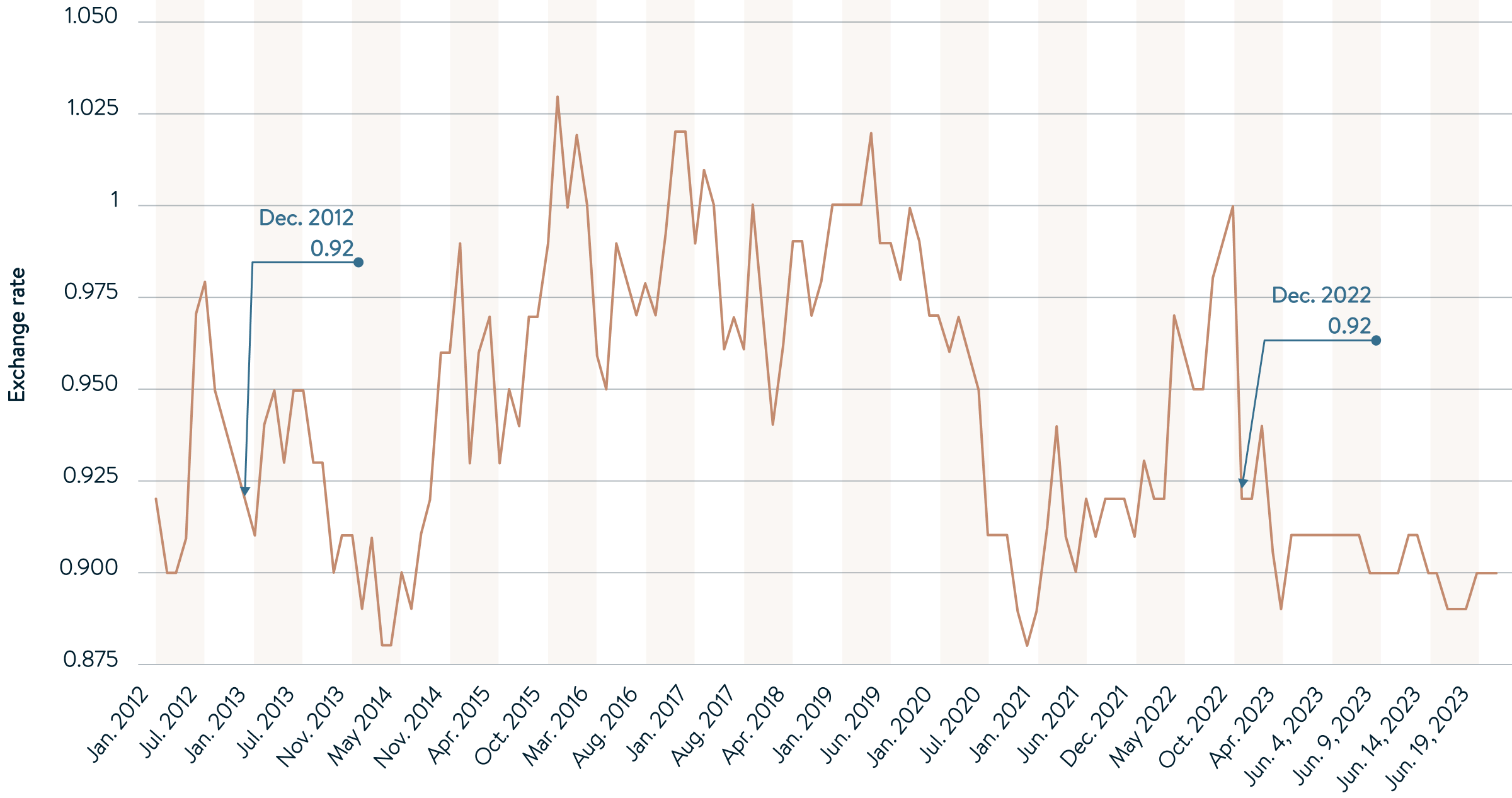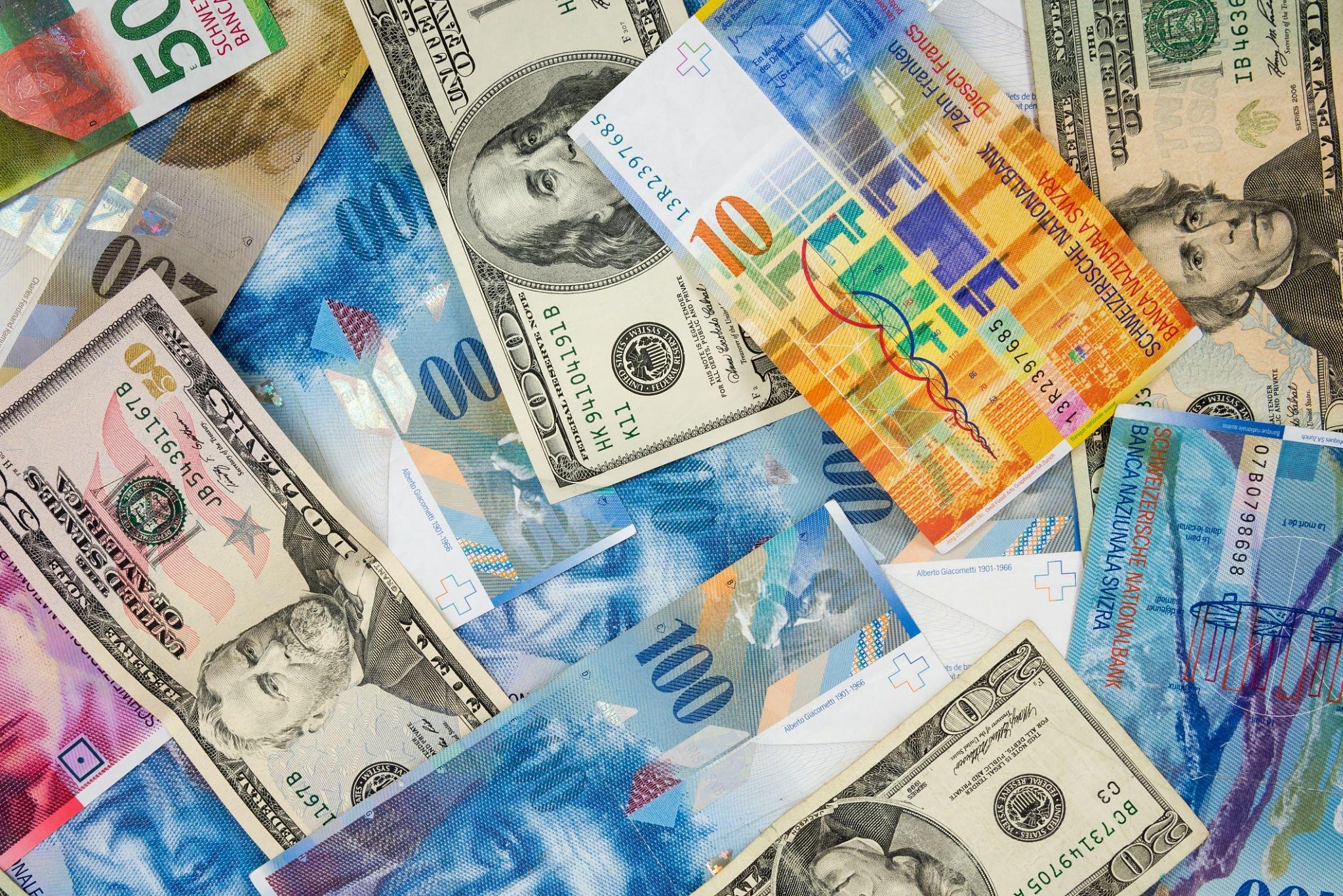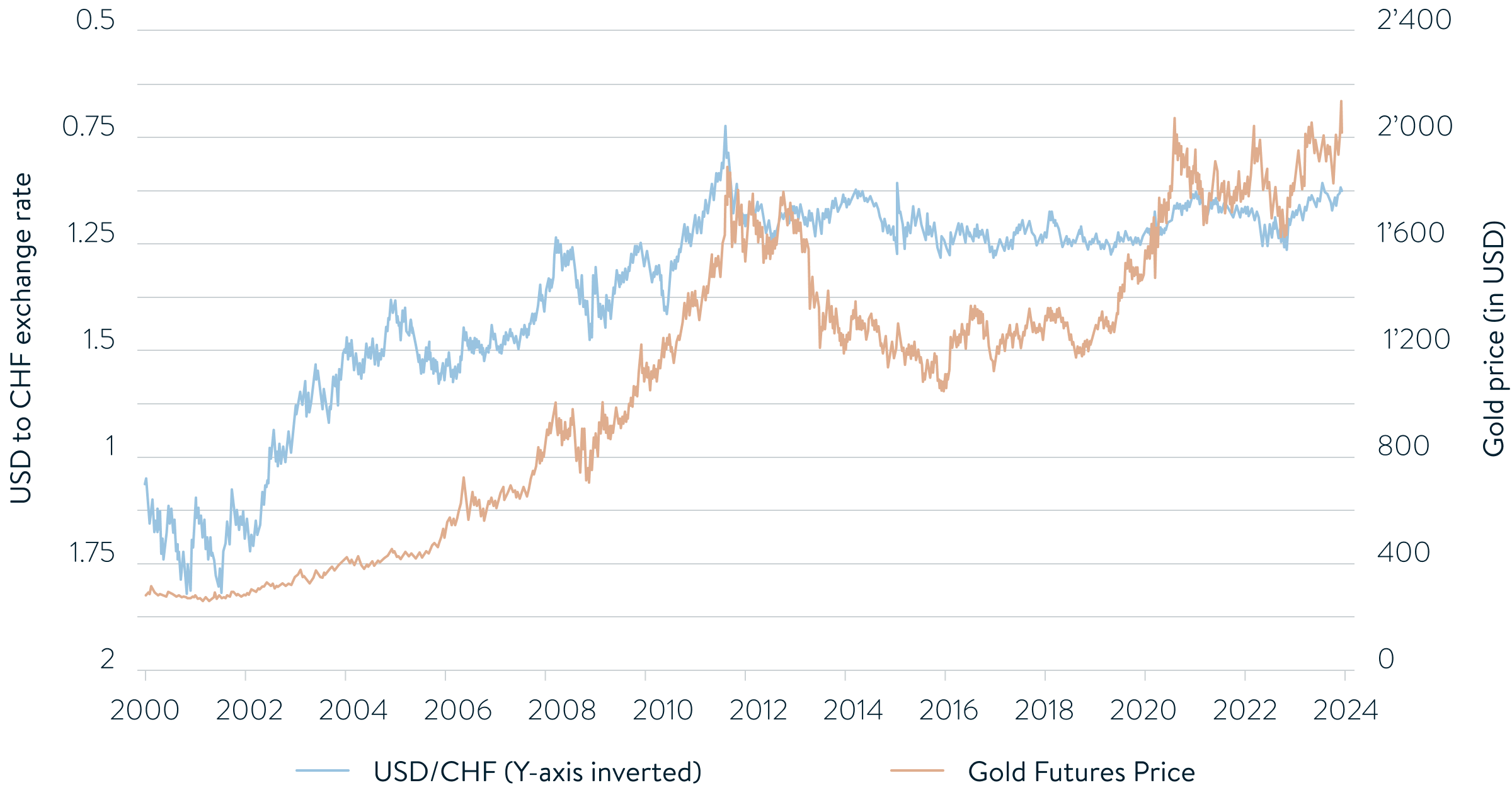A bear and a bull
In October 2023, Peter Kinsella, head of FX strategy at Union Bancaire Privée, was interviewed for the Financial Times (FT) and expressed his bearish concerns for the Swiss franc. He believes that geopolitical anxiety, coupled with over CHF 100 billion in support from the Swiss National Bank (SNB), have been the main drivers of our currency’s appreciation to all-time highs.
With domestic inflation under control as a result of the franc’s strength, and lower inflation rates now representing the dominant trend among other developed nations, Kinsella argues that the SNB will surely cease its support operation. If, additionally, geopolitical worries were to subside, the two main reasons for the currency’s strength would be eliminated, most likely leading to selling pressure.
Within days of the debut of this Financial Times article, it was rebutted in a letter to the FT from Hanspeter Jenni, a retired managing director of UBS in Zürich. Jenni highlighted that the SNB’s CHF 100 billion support initiative was a drop in the ocean compared with the many hundreds of billions it has spent buying euros and dollars over the past decade in an effort to undermine the franc and bolster the competitiveness of Swiss exporters. On top of that, Jenni argued that low Swiss inflation didn’t diminish the franc’s appeal but, in fact, enhanced its status as a safe haven for foreign investors seeking yield.
The truth is – both men make compelling arguments in support of their views. At Le Bijou, however, we believe that the crucial issue is not the SNB’s support operations, but the troubled times we live in. While Kinsella predicted – rather obviously, perhaps – that these tumultuous times would end at some point, he failed to address the most important issue: “When?”






